GoDaddy’s EVP of Global Platform Development Shares 6 Global Growth Tactics
When James Carroll was brought into GoDaddy in 2013 as EVP of Global Platform Development he was tasked with a singular mission: transform GoDaddy into a global business.
At the time, GoDaddy was 16 years into building its brand as one of the top domain provider and web services companies in the United States. The Arizona-based company was starting to see interest outside of their home market and knew they needed to expand the business and grow their model. (Interested clients in foreign countries were actually trying to hack their way into their US site to purchase domains.)
GoDaddy meant business when they said they wanted to go global—and so did James Carroll.
With more than 20 years of experience in internationalization, James was already a major player in the industry, having led the localization of hundreds of notable products at Microsoft, Yahoo!, and Apple to markets around the world.
In just 3 years, GoDaddy successfully reinvented itself as an international brand, with services expanded to over 30 languages and 56 dedicated markets, selling in 125 countries and 43 currencies. Their international paying users now account for over 7 million out of 18 million total users—40% of their entire business worldwide.
Given GoDaddy’s now global scale, they now own 1 out of every 5 internet domains, making GoDaddy the largest domain name registrar. This means every day, they serve 18 billion DNS queries served daily across 71 million domains worldwide.

We sat down with James Carroll recently to chat about his experiences at GoDaddy and in localization. This article covers James’ advice on:
- starting and following through a localization workflow
- dealing with the most difficult challenges localization teams face
- prioritizing new market launches, and
- localizing on smaller budgets or for mobile apps and games.
It all starts with a solid plan.
Before those 56 markets and over 30 languages were a reality for GoDaddy, they were strategic goals in James’ global expansion plan.
In a presentation James gave earlier this year (link at bottom), he began by emphasizing the importance of designing a carefully thought out localization plan.
“When I came into GoDaddy, I gave myself six weeks to develop the plan on how we would bring the company global,” says James.
Here’s a breakdown of James’ strategic plan:
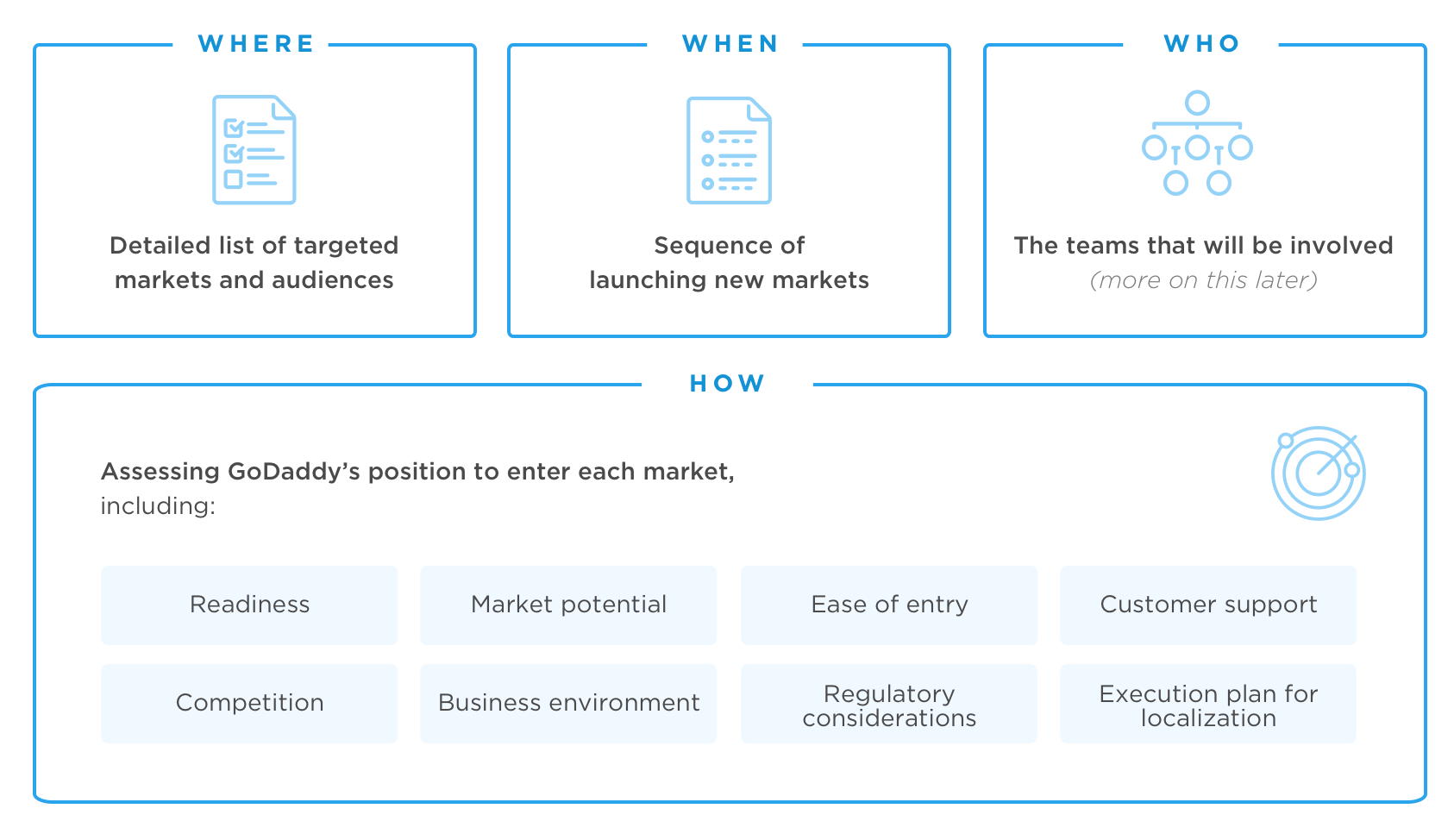 “It’s important to just get everything sorted. Knowing what you’re going to do and how you’re going to do it, and really thinking through all your offerings before you even start thinking translation and localization.”
“It’s important to just get everything sorted. Knowing what you’re going to do and how you’re going to do it, and really thinking through all your offerings before you even start thinking translation and localization.”
Build for a global scale—from the start.
[bctt tweet=”“Ensure your systems and capabilities are internationally sufficient.”” username=”oneskyapp”]
Localization plans often call for planning to be everywhere in the long-term. Be everywhere in X years is a catchy goal to center your team around. But James recommends setting your sights on scaling globally much earlier, at the very beginning.
“Be global before being local,” he says. This means building and using the correct platform and processes that can handle your scaling across markets, even if you’re only launching in one new market. Having a global mindset helps to prioritize robust systems that will “minimize the speed bumps” in your first new market, and stand the test of the next 50 markets.

“Many companies get ahead of themselves and start to sell globally, even without the ability to correctly handle foreign customers.” As James points out, even something as simple as capturing customers’ phone numbers and showing pricing in different international formats can be a logistical nightmare if you don’t have the correct systems set up—especially if you’re not looking out for them.
A tool that helps you effectively scale up localization efforts is a Translation Management System (TMS). Read about the 7 benefits of a TMS for your app or product here.
Delivering customer value means different things across markets.
With his expansive responsibilities as EVP of Global Platform Development—helping GoDaddy build out global products for its international audiences—prioritizing James’ daily tasks is a serious undertaking.
Delivering customer value has always been in the top three. “You have to be all about the customers.”
One of the biggest problems he sees companies facing in trying to localize is failing to “deliver an immersive cultural experience” in each market. They need to go beyond good translations, although translations have to be world-class from the start.
“In the past, people were concerned mostly about localizing the product itself,” recalls James. “But now it’s different. Now it’s really thinking through all aspects—product, marketing, how the company shows up, customer support. It’s really end-to-end from a customer experience point-of-view.”
“You have to really show up as local. In every single touchpoint of your experience with a company. You have to offer locally relevant products.”
The GoDaddy Localization Team implements checks and processes—”both manual and automated,” says James—to ensure that international systems and capacities are in place at all touchpoints. “We build on this foundation, making sure it’s bulletproof, and then ensure the experience is in the right place for the target market.”
GoDaddy’s India marketing campaign is a perfect case study for the “experience” James is referring to.
As one of the first countries that GoDaddy entered, India was strategically important: 26% of its 1.3 billion population is now online, with that percentage growing rapidly. GoDaddy’s mission was to raise awareness for its small business offerings and domain services. Given television’s status as a huge medium nationwide, James’ team rolled out a TV ad that was a hit with local audiences for its use of Hindi language and culturally-based humor. On the ground, GoDaddy hired local customer care agents.
“We made sure they knew as much about doing business in the market as our customers did.”
Here is the NutCutLal TV ad in full: (it’s quite catchy!)
Experienced, aligned teams are at the center of localization success.
We asked James about his top priorities as EVP International. “This might sound corny,” he says, “but my first priority is the team. At the end of the day, it all comes down to people.”
[bctt tweet=”If you have great people, great teams, you deliver great customer experiences. – James Carroll” username=”oneskyapp”]
“So it comes down to ensuring you have the right people onboard.” James spends a significant part of his time hiring and enabling his team, looking at culture, experience, and personality fit for GoDaddy’s global mission.
“We’re hiring for international experts and people who are passionate about globalization, people who can come in and apply themselves to the problems and challenges we’re trying to go for.”
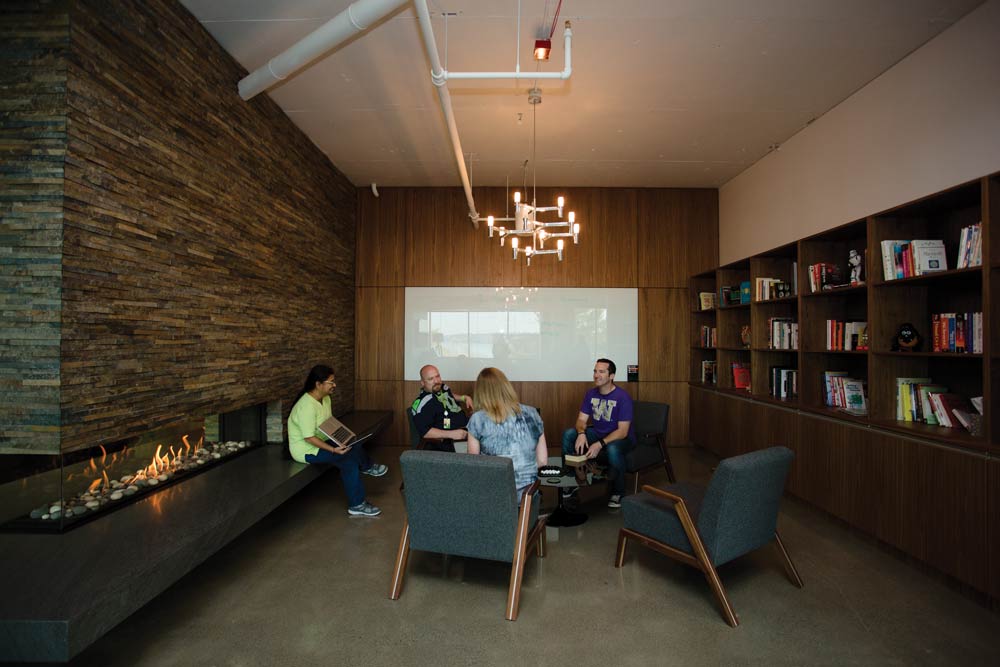
Aside from building a solid localization team—one of James’ first tasks when he joined GoDaddy—the greater organization plays a key role: “The entire company needs to be all in. Teams company-wide need to support the charter of going global.”
To achieve this, the localization plan needs to be communicated well and progress must be visible, so that teams “have the right context” and know how to play their part in growing the brand internationally. James pulled this off at GoDaddy by developing a communication protocol and participating in each communication milestone as a way to go through the localization strategy in detail. As we’ve seen in the past, clear documentation at a centralized place that the whole team can access also does the trick.
James gave some examples of the teams that were vital to GoDaddy’s expansion to 125 new countries and the functions/work they owned:
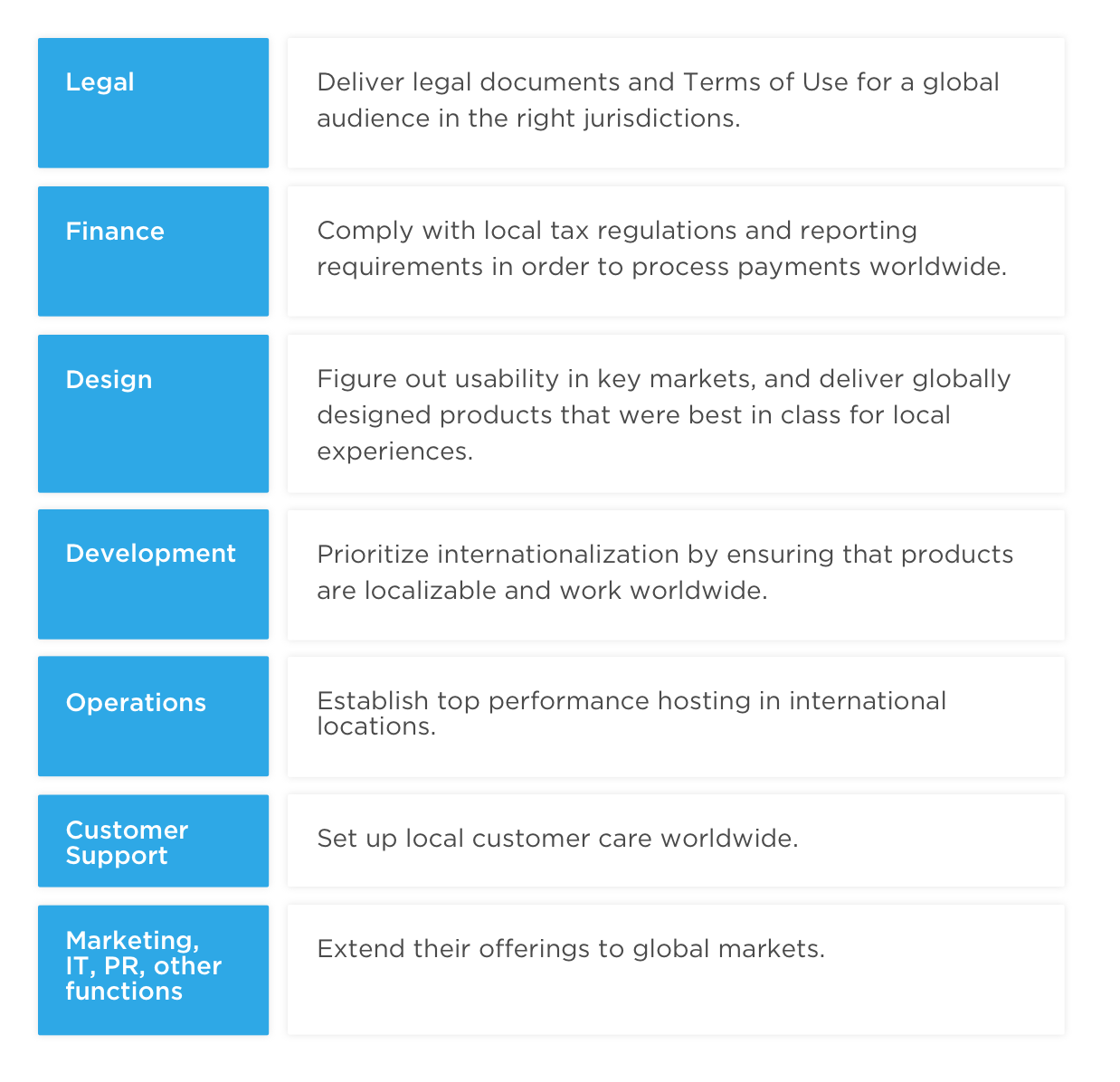 James illustrates the kind of cross-functional teamwork required to launch in a new market with GoDaddy’s expansion in Asia. They built many different on-the-ground teams to work on the launch in parallel with their US teams, including customer care in Dalian, marketing in Shanghai, and a testing team in Beijing, in addition to other localization experts all over Asia. “It was a huge orchestration of many teams and functions.”
James illustrates the kind of cross-functional teamwork required to launch in a new market with GoDaddy’s expansion in Asia. They built many different on-the-ground teams to work on the launch in parallel with their US teams, including customer care in Dalian, marketing in Shanghai, and a testing team in Beijing, in addition to other localization experts all over Asia. “It was a huge orchestration of many teams and functions.”
Cross-functional teams—especially those spread all around the globe like GoDaddy’s—rely on communication tools to help them stay on the same page. A TMS with built-in collaboration features like OneSky helps teams communicate and edit directly with their internal and external partners. Learn more about our free collaboration tools here.
Small budgets and mobile apps can go far in localization.
“It’s do-able for small businesses to localize. And it will continue being more and more do-able as time goes on.”
James says there are businesses where “it just makes sense” to push to other markets, especially businesses that “extend very easily out,” like hotels seeking new customers from other countries. “You should have the capabilities of communicating to your clients in different languages, particularly if your target audience is in different markets.”

Similarly, for mobile apps, James suggests making them broadly available from the beginning, then doing market analysis on the countries where it will perform well.
“Mobile apps are a phenomenon by themselves, they transcend markets. Global general availability is a first—and it’s a must. I’d be very bullish on going global with that type of product from the get-go.”
James notes that the global tech and migration trends will affect SMBs and apps in the future. “We’re going to see more consumption on mobile phones—it’s just skyrocketing. As more people move around the world, they still want to consume the products from before.”
From this, James deduces there will be more e-commerce across borders, “not just from the big guys, but from smaller companies.” It will become easier for companies to talk to customers from different countries as tools and translation services continue to improve in speed and quality.
Some regions will be of special interest, including Asia, which James notes has been a “fulcrum” of mobile development growth.
Localization matters to the business.
Beyond delivering better customer value, going global has allowed GoDaddy to rapidly and successfully scale up their operations and grow their user base.
“What we did here was bring the whole company global, not just the product—it’s a growth accelerator.”
GoDaddy’s mission to help small businesses succeed is one that James Carroll fully believes in.
[bctt tweet=”Small businesses are the backbone of all the economies worldwide.-James Carroll” username=”oneskyapp”]
“If we provide them with good products, you’re not only bettering the lives of small businesses, you’re bettering the economies, you’re bettering the countries.”
This equation demands successful and thoughtful expansion into new markets.
“That’s the power of localization: if we do it right, building capabilities globally, we can make a positive impact on people’s lives around the world.”
Your Turn
In summary, here are 6 global growth tactics GoDaddy’s EVP of Global Platform Development James Carroll shared from his 20+ years of experience in localization:
- 1. It all starts with a solid plan.
- 2. Build for a global scale—from the start.
- 3. Delivering customer value means different things across markets.
- 4. Experienced, aligned teams are at the center of localization success.
- 5. Small budgets and mobile apps can go far in localization.
- 6. Localization matters to the business.
Ready to bring your brand to new markets? Start developing your Minimum Viable Localization (MVL) strategy through our free 30-page guide:
About OneSky
OneSky provides seamless end-to-end localization solutions for thousands of mobile apps, games, websites, and businesses worldwide. We offer professional translation services in 50+ languages and a translation management system (TMS) with API integrations and plugins to streamline your workflow. We hire and carefully screen our own translators to ensure the highest control over quality. Using OneSky’s powerful QA features, cross-functional teams collaborate efficiently to deliver faster release cycles and higher quality translations. See how you can go global at www.oneskyapp.com
About James Carroll
As head of Global Platform Development, James drives the architecture and development for all of GoDaddy’s global business and product platforms, including the systems that power global marketing and ecommerce systems worldwide.
Before joining GoDaddy in 2013, James was a Senior Vice President at Yahoo!, where he directed the company’s global R&D centers across Asia and the Middle East and oversaw international delivery of all Yahoo! products and services worldwide. Prior to Yahoo!, James spent 13 years as General Manager at Microsoft, where he managed the MSN international team and later, the Windows and Windows Live international teams.
About GoDaddy
GoDaddy powers the world’s largest cloud platform dedicated to small, independent ventures. With more than 17 million customers in over 125 countries — including 40% of our customers outside the US — and with over 71 million domain names under management, GoDaddy is the place people come to name their idea, build a professional website, attract customers, and manage their work.
Earlier this year, James shared his experiences of bringing GoDaddy global in a presentation titled “From Big To Massive” at the LocWorld Conference in Shenzhen, China. Many of this article’s insights were sourced from that talk. Here is a full transcript with James’ slides.

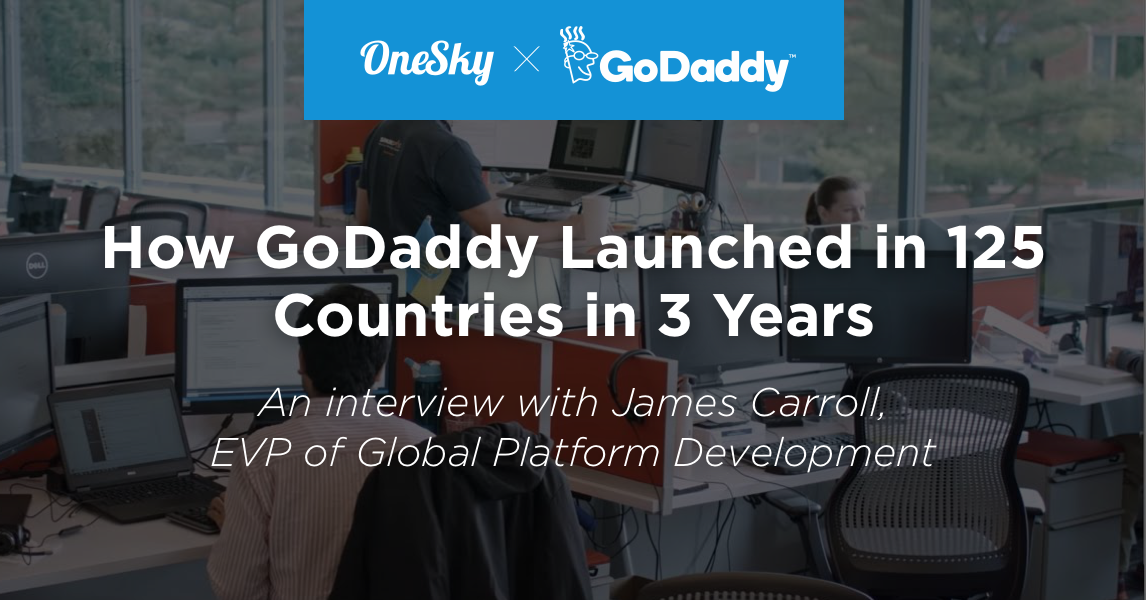
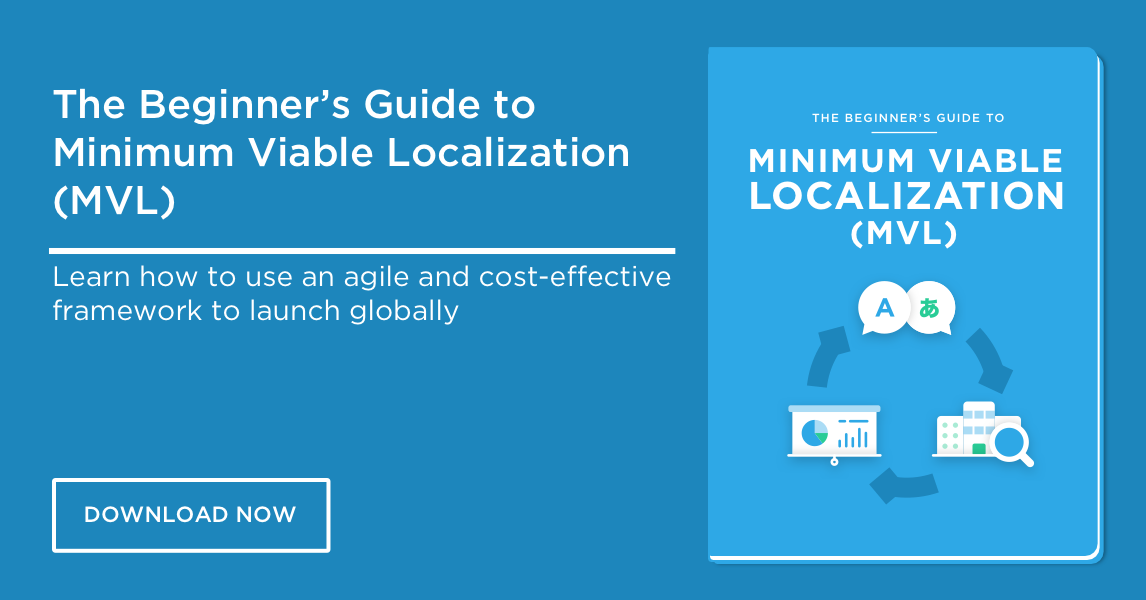

 Written by -
Written by - 


 Written by
Written by 



you can get all the apps in one app just go through the links given here..
https://getapk-market.org/
https://getapk-market.org/
Nice Post
Mobile app development companies in Coimbatore